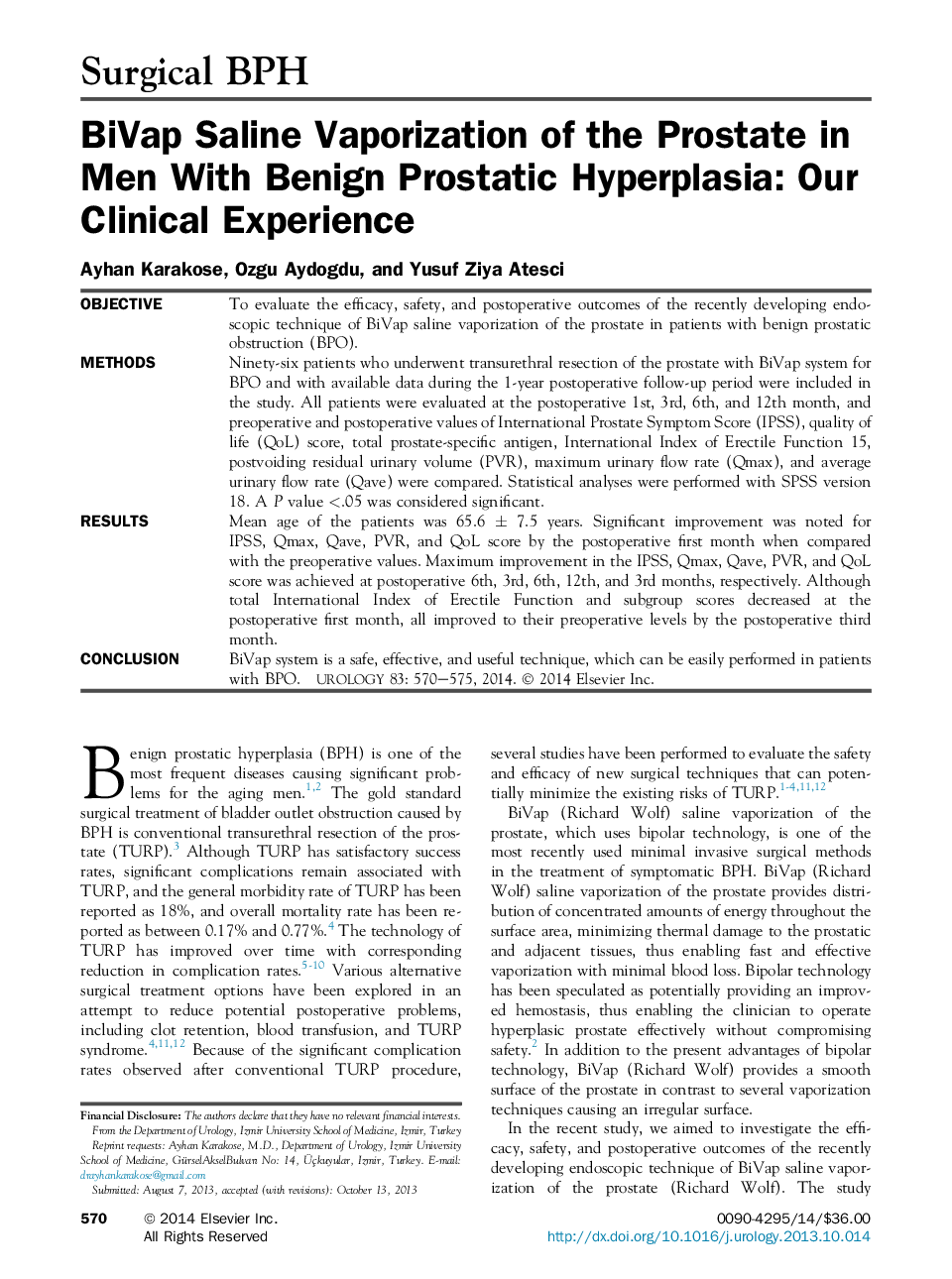| Article ID | Journal | Published Year | Pages | File Type |
|---|---|---|---|---|
| 3900233 | Urology | 2014 | 6 Pages |
ObjectiveTo evaluate the efficacy, safety, and postoperative outcomes of the recently developing endoscopic technique of BiVap saline vaporization of the prostate in patients with benign prostatic obstruction (BPO).MethodsNinety-six patients who underwent transurethral resection of the prostate with BiVap system for BPO and with available data during the 1-year postoperative follow-up period were included in the study. All patients were evaluated at the postoperative 1st, 3rd, 6th, and 12th month, and preoperative and postoperative values of International Prostate Symptom Score (IPSS), quality of life (QoL) score, total prostate-specific antigen, International Index of Erectile Function 15, postvoiding residual urinary volume (PVR), maximum urinary flow rate (Qmax), and average urinary flow rate (Qave) were compared. Statistical analyses were performed with SPSS version 18. A P value <.05 was considered significant.ResultsMean age of the patients was 65.6 ± 7.5 years. Significant improvement was noted for IPSS, Qmax, Qave, PVR, and QoL score by the postoperative first month when compared with the preoperative values. Maximum improvement in the IPSS, Qmax, Qave, PVR, and QoL score was achieved at postoperative 6th, 3rd, 6th, 12th, and 3rd months, respectively. Although total International Index of Erectile Function and subgroup scores decreased at the postoperative first month, all improved to their preoperative levels by the postoperative third month.ConclusionBiVap system is a safe, effective, and useful technique, which can be easily performed in patients with BPO.
